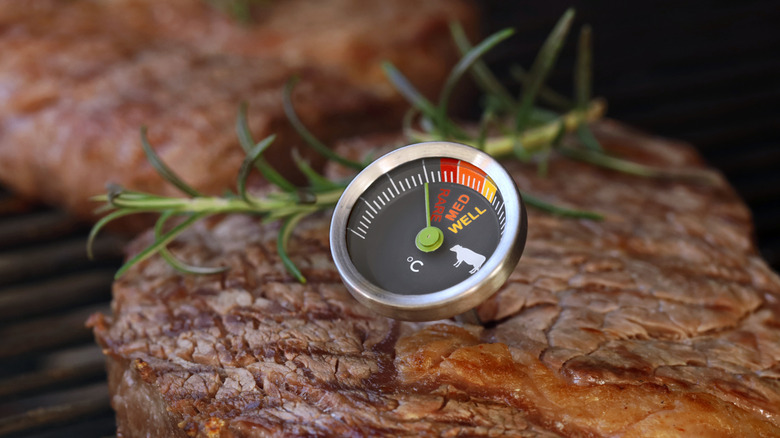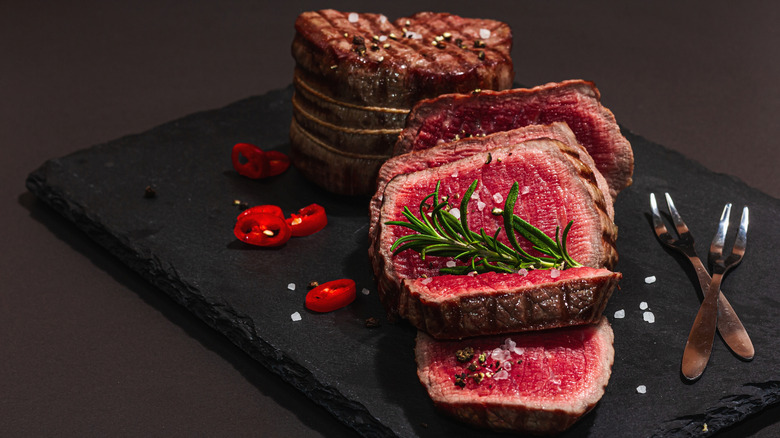The Temperature Rule To Follow That Kills Bacteria In Your Beef
While beef may be delicious when cooked from anything from blue to well-done, there's only one surefire way to eliminate the presence of bacteria and parasites. Your meat must reach a certain internal temperature to become a hostile environment to microbes, but that temperature differs depending on the beef itself.
From burgers to meatballs, ground beef is especially vulnerable to bacteria. Grinding meat mixes all the bacteria found on the surface of a cut through the whole batch. Because of this, ordering a rare hamburger is far less safe than ordering a rare steak. Therefore, it's vital that you cook your ground beef to a safe internal temperature of 160 degrees Fahrenheit before consuming it.
Since steaks, roasts, and other cuts mostly only have bacteria on their surface, agencies like the USDA and FDA suggest reaching an internal temperature of 145 degrees Fahrenheit. There are a lot of steak temperature terms that don't mean anything, but when you order a "rare" steak at a restaurant, it's unlikely that it will be cooked higher than 120 Fahrenheit — which, while likely safe enough, doesn't have the government's stamp of approval. Determining the internal temperature of beef is nothing complicated, and in fact, there are many tricks online for both ground beef and steaks. While an accurate meat thermometer is the best tool, there are several others you can use if you don't have one available.
How to determine the internal temperature of beef
Many of the tools used to determine the internal temperature of beef are simple and sturdy. If you don't have a meat thermometer available, check beef temperatures with a cake tester. Insert the metal rod into the beef and let it sit for several seconds before extracting it. Then, lay the tip of the rod against the inside of your wrist and feel how hot it is. While not as precise as a thermometer, it gives you a general idea of the beef's temperature as it absorbs heat quickly.
For steaks and other larger cuts, you can usually tell how done they are by their firmness. The firmer the steak, the higher its internal temperature. Gordon Ramsay's foolproof method is to poke the meat of your hand in different places to identify how firm different levels of doneness are. The soft flesh just below your thumb is rare, the meat above your wrist is medium, and where your wrist meets your forearm is well done.
Unfortunately, there is no reliable way to judge the internal temperature of ground beef without a thermometer. The FDA released a statement in 1997 dispelling the rumor that clear juices mean it's been cooked thoroughly, recommending that anyone preparing ground beef use a thermometer. Also, the firmness of cooked ground beef depends on how much the meat was worked prior to cooking and the presence of other ingredients. Always use a meat thermometer to determine the internal temperature of ground beef.


